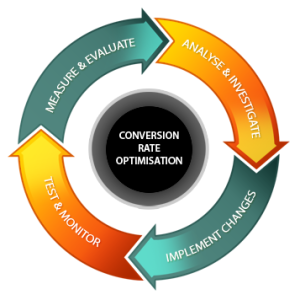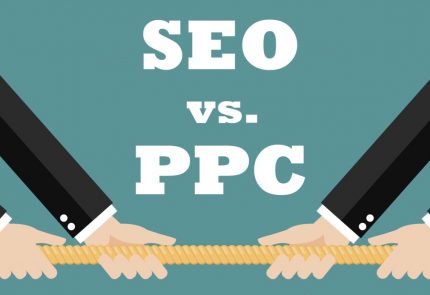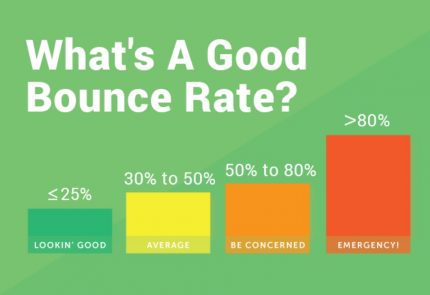In the online world purchasing decisions are made within a couple of seconds. Your website has a few moments to make an impact or get a response and this is why conversion rates really matter when it comes to your website design and user experience. If the customer doesn’t like what they see, they will exit the site and most likely go to a competitor. Remember, it’s really easy to hit the exit button. People are not loyal and your website needs to convert these people into paying customers very quickly.
Conversion is king when it comes to website strategy
Not an easy task but following are a few great tips to optimising your website so it is performing at its very best and converting as many people who visit your site as possible.
What is Conversion Rate Optimisation?
 CRO is the technique used to convert as many website visitors into paying clients. Ideally you want a reaction or signal out of your visitor and these can vary depending on your conversion goals. Some people want you to sign up to a newsletter while others want you to complete the online inquiry form. There can be dozens of these conversion points throughout your website and it’s the job of your design team to work out a strategy that will increase the rates of conversion and in turn your sales.
CRO is the technique used to convert as many website visitors into paying clients. Ideally you want a reaction or signal out of your visitor and these can vary depending on your conversion goals. Some people want you to sign up to a newsletter while others want you to complete the online inquiry form. There can be dozens of these conversion points throughout your website and it’s the job of your design team to work out a strategy that will increase the rates of conversion and in turn your sales.
Conversion rate optimisation also involves reducing web bounce rates. That is, site exits from the home page or they page they land on. Website stickiness and site exploration is what converts users the logic being; the longer they spend on your website and the more they interact and engage with it, the higher the probability of an inquiry. If you want to succeed online and make money from your website then CRO is a vital and extremely important component of your digital marketing campaign.
Why Does your customers need a conversion focused website?
There are many components of the website that need to be optimised for conversion. Websites can be broken down into various components and each of these need to be looked at:
- The check out process for an eCommerce website – it needs to be simple, easy to use and allow customers to buy the goods with a minimum of fuss and distractions. You want to eliminate all road blocks when it comes to buying a product. Nothing annoys people more than having to register their name and email address at the check out. Let then continue the process as a guest without all the hassle and you will find that your sales will start to improve. It’s a nightmare having to verify emails and go through the whole headache just to buy some clothes for example. CRO makes everything so much easier.
- If you require users to fill out a form – auto population of forms is a great idea.
- Newsletter sign ups need to be done so that the client feels they can opt out at any time. Plus with all site wide forms ( inquiry, contact and subscription) they need to be super simple to fill out and email off.
- A lot of people will land on a website and not know what to do. yes, there are people out there in the world like this and will need to be guided to the end goal. Its the function of conversion rate optimisation that will enable your customers to find what they are looking for within seconds. Think of it like a shop front. You wouldn’t put any barriers to entry at the front door, so why would you do it on your website?
- People are essentially time poor and they’re probably doing their shopping on the way to work or in their lunch hour. You website must have loads of conversion points that enable site visitors to make the purchase, booking or inquiry easily. Time online is a valuable commodity and your don;t want to waste it. People would prefer to watch their Facebook feeds or check their Instagram accounts rather than messing around with your website figuring out where to go. This is the reality of the digital would in 2018!
All of the above are necessary functions of a website and need to be continuously fine tuned and improved for better conversion. You can always check the effectiveness of your CRO by using your Google analytics. If bounce rates are up, then it’s back to the drawing board. If they are down, then job well done. But, never rest. You should always be studying your competition, looking at web trends and making constant improvements to the user experience.
Conversion rate optimisation tips
1. Simplify all web processes.
The more complicated your website is, the higher the chances of site abandonment and bounce rates. Simplify everything, make the web journey as easy as possible and the rewards will be there.
Point to consider include:
- Make sure the web layout is simple, uncluttered and clean – avoid flashy images, over use of colourful graphics, pop ups and animating banners.
- If you want information, keep it under 4 fields: name, email and web address & phone number. Anything more like your cats name or date of birth, passport number is just overkill and a real pain in ass.
- Do not give too many choices and options. Guide your customer, never let them guide you or offer opportunities for site exits. Remember, it’s your site and you need to control the flow of your customer.
- Lengthy scrolling down massive pages with too many images are a site killer – keep it all within the top half of the page.
- Never make users sign up or join if you want them to buy something – make this optional NEVER compulsory. There is nothing worse than having to verify emails right before your buy the product. It’s a pain and you never know what they are going to do with your information. Just like buying at the retail level – you want to be in and out quickly. Signing up and joining clubs whilst good for some, is very inconvenient for the majority of the population. In fact the ABS reports that 92% of people will not proceed with the check out if they are forced to join up.
2. Lengthy Loading Speed Will Destroy Your Website
This is a no brainer. Minimise download times and website speed to a few seconds. Anything more and you can kiss your customers goodbye. Add to this, Google looks at site speed when it comes to your SEO ranking and site speed/download times become a real issue. If you have been using a SEO company in the past that has not addressed site speed then you need to look at changing your SEO team. This is a critical issue and these guys should be onto this from the get go. It’s really the first thing that they should be looking at. Have a look at what the Google guru Matt Cutts say about site speed and how it can affect your rankings.
If your website has too many images, flashing banners, large graphics, then you need to measure site speed – there are tools out there for this, but it’s best to leave it to the professionals who will know to optimise your site so it’s super fast and very Google compliant.
Loading delays, watching the wheel spin for 30 seconds before the site loads is going to have a serious impact on your business – be very aware of this and do everything you can to keep your site lightening fast. Remember, slow websites equate to poor performance which equals disastrous conversions. You know exactly what I am talking about here. How many times have you hit the delete button whilst waiting for a site to load?
Some great points to note:
- Significantly downsize each individual web page – limit graphics and text – keep them manageable.
- Optimising all of your images so they are very SEO compatible.
- Ensure your hosting response times are quick – servers should ideally be based in Sydney – if you have hosting outside Sydney consider switching providors as soon as you can.
3. Mobile Web Design Makes Life Simple
Mobile traffic from iphones and handhelds are expected to increase seven fold by the year 2018. Too add to this, statistics show that this mobile market is way more impatient than the traditional desktop user and if your site is not super efficient and a click away from buying then they are exiting. Responsive sites and individual mobile sites (.m) are going to play an increasingly important role in the user experience and ultimately in your web conversions. This mobile reality is here and conversions are only going to get worse, the longer you delay the inevitable. Most websites are now mobile friendly especially if they are built using a WordPress CMS.
4. Update old website content
A lot of people forget to change or tweak old copy and websites can tend to become out dated or irrelevant which will affect the way people engage with the site. If what they’re reading sounds like it was written 10 years ago, this may affect trust and put some doubt in customers minds about the legitimacy of your business. Look at ways to refresh copy whether it’s an old blog post or a key heading on the home page. Keeping your website fresh is an important key to better conversion rates. On top of this it will help with your SEO.
5. Clean up dead or broken links
Over time links die as web pages get deleted or become obsolete. The last thing you want your customers to be doing is clicking on a link that takes them to a non existent page. Clean this up quickly. There are heaps of free tools you can use but try: https://www.screamingfrog.co.uk/broken-link-checker/
So ask yourself this question? Are your website conversions suffering because you have been too lazy to do anything about it or you really just have never thought about this issue? Contact us today to speak to one of our online marketing professionals for a FREE consultation on improving your conversion rates. CALL 02 9360 8514.
In many cases the fixes are quite simple and can be done really easily but like everything else in the digital space this requires loads of constant attention and monitoring. I suggest you treat this as a matter of urgency as you could be spending a fortune on SEO and getting lots of visitors to your site without sales improving. This is more common than you would think and the people that actually do something about it are the ones that benefit.



